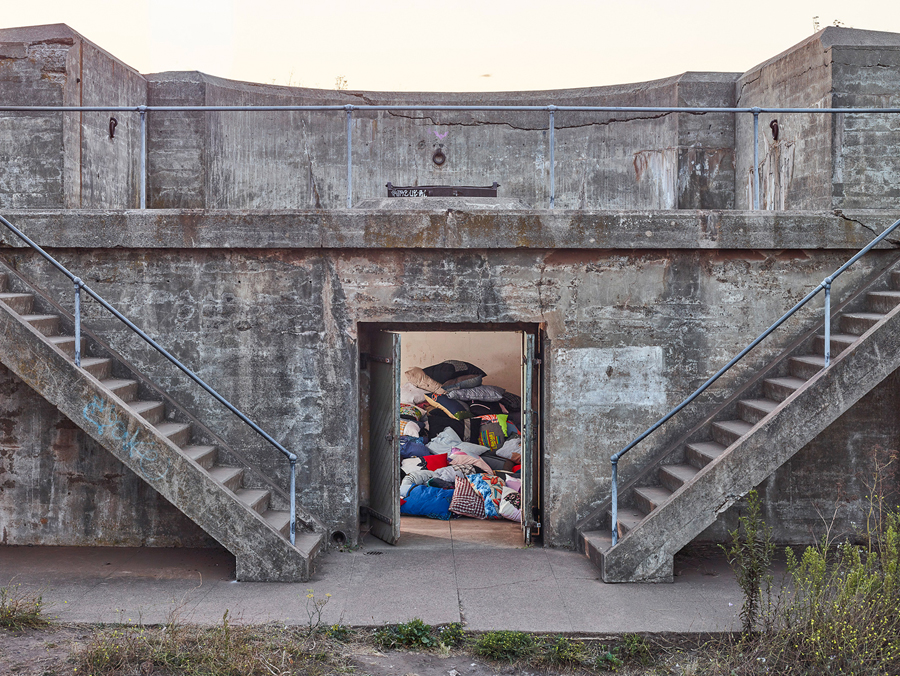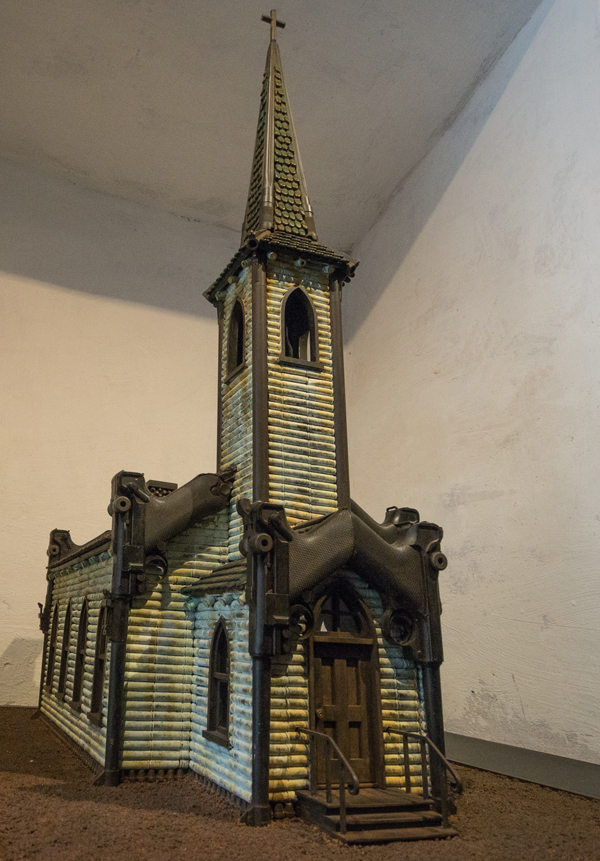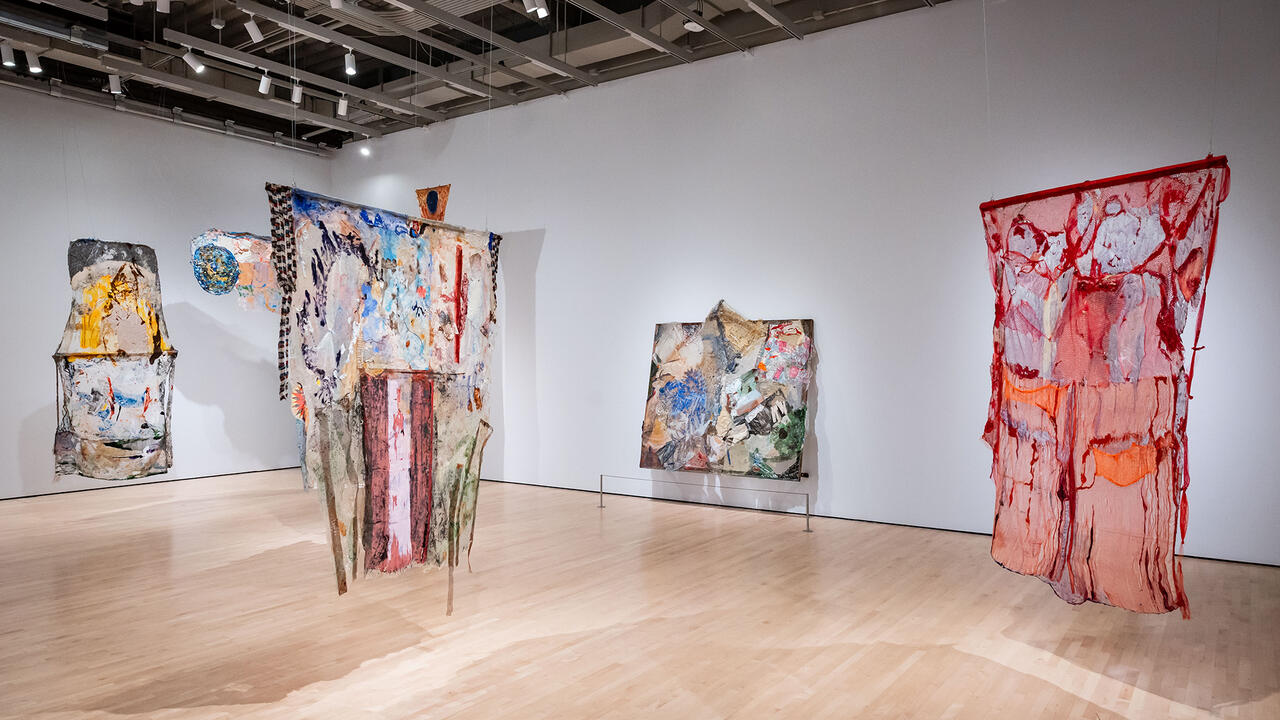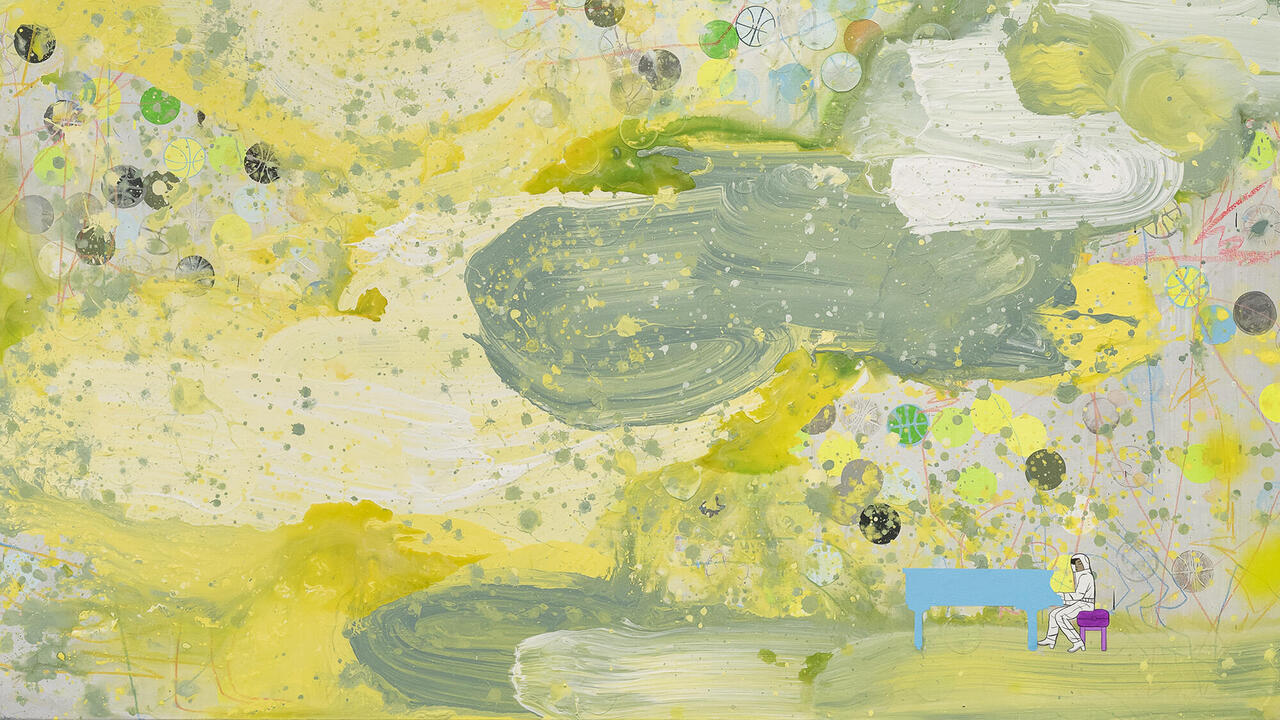Home Land Security
Fort Winfield Scott, San Francisco, USA
Fort Winfield Scott, San Francisco, USA

The venue for FOR-SITE Foundation’s startling new show, ‘Home Land Security’, is Fort Winfield Scott, a 250-year-old, decommissioned US army base in San Francisco’s Presidio, perched above the Golden Gate Bridge. It’s a highly charged site that invokes the fraught US and Spanish military and colonial histories in California. The works, by 18 international artists and collectives, suggest that the collateral damage from the preservation and defence of collective security are violence and fear. Often, though, the
individuals who suffer and those responsible for their pain are not pictured; their presence is only implied. For instance, the floating suitcases in Mandana Moghaddam’s video Exodus (2012), which is screened in the concrete shell of a former arms-storage room, reference the refugees drowned while attempting to cross the Mediterranean. The quietly bobbing luggage is all that remains of the lost lives which too many states regard as an unfortunate yet necessary consequence of securely sealed borders. The Díaz Lewis collective’s 34,000 Pillows (2016–ongoing), a mound of 100 cushions crafted from donated clothing, alludes to the arbitrary US Congressional mandate of a 34,000-immigrant ‘bed quota’: the average number of inmates that must be housed daily in all US Immigration and Customs Enforcement detention facilities. The unique appearance of each individual pillow is countered by their accumulation, massed anonymously like bodies in detention.

Tirtzah Bassell’s Concourse (2016) – a group of duct-tape murals that depict dozens of figures trapped in security control lines – expressively captures the oppressive monotony of state-imposed surveillance and what artist Michele Pred describes, in the exhibition’s introductory video, as ‘a false ritual to make people feel safe’. Bassell’s queue is especially eerie because it seems so sparse, as if every other traveller in the line has been removed for interrogation. Pred’s own contribution, Encirclement (2003), displays hundreds of small items – pen knives, insulin syringes, sewing scissors, corkscrews, toy guns – confiscated at the security checkpoints of San Francisco International Airport: a collection that figures personal loss more than thwarted threats.

Tammam Azzam’s claustrophobic ‘Storeys’ paintings (2016), which depict devastated Syrian cityscapes, fill a room in a building that once housed the Nike Missile anti-aircraft programme’s Bay Area headquarters: a poignant allusion to the devastation bombs inevitably wreak. Bodies are also notably absent in other works on display: Al Farrow’s sculptures of a church (Revelation I, 2009) and a mosque (Mosque III [after National Mosque of Nigeria, Abuja], 2010) – fashioned from bullets, guns and shell casings – conjure images of religiously motivated bloodshed. The Propeller Group’s AK-47 vs M16 (2015) records bullets in slow motion as they pierce a block of ballistics gel, notable for its capacity to simulate the density of flesh; the titular Soviet and American weapons reference the cold war violence that tore apart Vietnam, the artists’ country of residence. In Krzysztof Wodiczko’s video Veterans’ Flame (2009), a flame flickers from the disembodied breath of a former soldier, who describes his wartime experiences in a voiceover.
The question the exhibition asks is not a new one, but rarely is it so eloquently posed: at what point did we sacrifice our democratic freedoms to enable the very security measures that were intended to defend them? Taken together, the show’s artworks are an effective counterpoint to the global resurgence of reactionary conservatism, from Brexit to the US presidential election.

Bill Viola’s transfixing four-channel video, Earth Martyr, Air Martyr, Fire Martyr and Water Martyr (2014), makes the stakes – and challenges – of this conflict viscerally clear. In it, four people in stress positions endure torture by the four elements. Are we witnessing the meting out of ‘justice’ or the brutalization of victims? And who is to blame for this atrocity? The power of ‘Home Land Security’ is that we don’t, and can never, know.






















